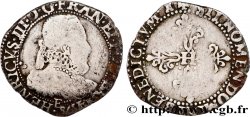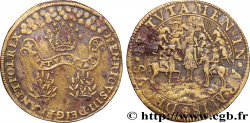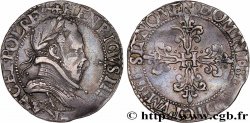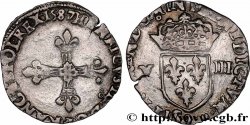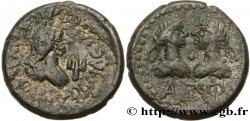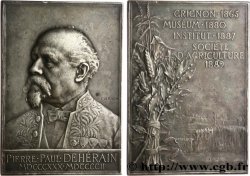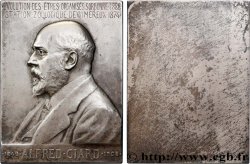Live auction - bry_481697 - HENRY III Double sol parisis, 2e type 1586 Beaucaire
Чтобы принять участие в торгах, вы должны войти в систему и стать подтвержденным участником аукциона. Войдите, чтобы сделать ставку. Ваш аккаунт будет подтвержден в течение 48 часов. Не ждите до закрытия торгов, чтобы зарегистрироваться.Сделав ставку на данный товар, вы вступаете в юридическое соглашение на покупку выбранного товара и нажатием кнопки «Сделать ставку» подтверждаете принятие вами условий интернет-аукционов cgb.fr.
Ставка может бить сделана только в полном эквиваленте евро. Торги закроются согласно времени, указанному в описании товара, все ставки, сделанные после закрытия торгов, учитываться не будут. Не следует откладывать предложение вашей ставки до последнего момента, так как система может не успеть обработать вашу заявку, и ваша ставка не будет принята. Более детальную информацию вы найдёте здесь: FAQ по интернет-аукционам.
Все ставки победителей подлежат комиссии 18%.
Все ставки победителей подлежат комиссии 18%.
| Оценить : | 400 € |
| Цена : | 355 € |
| Максимальная предлагаемая цена : | 355 € |
| Конец торгов : | 31 July 2018 15:59:27 |
| Участников : | 3 Участников |
Тип Double sol parisis, 2e type
Дата: 1586
Монетный двор / Город: Beaucaire
Металл: billon
Проба: 319 ‰
Диаметр: 26 mm
Ориентация осей монеты: 5 h.
Вес: 3,29 g.
Редкость: R3
Комментарии о состоянии
Ce double sol est frappé sur un flan large et irrégulier présentant quelques faiblesses de frappe. Exemplaire recouvert d’une légère patine grise portant de petites taches
Ссылки в каталоге: :
Лицевая сторона
Аверс: легенда: + HENRICVS. III. D. G° FRN. ET. P. REX (MG) 1586, (POINT DANS LE C).
Аверс: описание: H couronnée entre trois lis posés 2 et 1.
Аверс: перевод: (Henri III, par la grâce de Dieu, roi des Francs et des Polonais).
Обратная сторона
Реверс: легенда: R - .SIT. NOMEN. D[OM]INI. BENEDICTVM., (POINT DANS LE C).
Реверс: Описание: Croix cléchée fleurdelisée.
Реверс: перевод: (Béni soit le nom du Seigneur).
Комментарий
Stéphan Sombart et Jean Tastet ont fait le point sur les émissions des ateliers de Beaucaire et de Béziers pendant la Ligue (BSFN, avril 2002, p. 65-67) : “Le 7 juillet 1585, par le traité de Nemours conclu entre Henri III et la Ligue, les édits de tolérance religieuse étaient révoqués et le roi promettait à la Ligue d'expulser tous les Huguenots qui refuseraient de se convertir. Ce traité, enregistré au Parlement de Paris le 18 juillet et au Parlement de Toulouse le 31 juillet, allait renforcer en Languedoc une guerre civile entre deux partis déjà opposés : d'une part les ligueurs languedociens et d'autre part le parti des Politiques, dirigé par Henri de Montmorency et constitué de catholiques et protestants modérés. Henri de Montmorency, seigneur de Damville, est le fils puîné du connétable Anne de Montmorency auquel il succéda dans le gouvernement de Languedoc en mai 1563. Maréchal de France en 1566, Henri de Montmorency prend le titre de duc après le décès de son frère aîné François en 1579. En 1574 déjà, il s'oppose au roi Charles IX puis à son frère Henri III . À la suite du traité de Nemours, devenu le chef des opposants au pouvoir royal tenu en main par la Ligue, il entre à nouveau en révolte après avoir été destitué de son gouvernement de Languedoc. Refusant sa disgrâce, Henri de Montmorency continue à se comporter en gouverneur de Languedoc et procède à la fabrication de monnaies pour financer ses troupes. La Ligue en Languedoc possède l'atelier de Villeneuve-Saint-André-lès-Avignon. Henri III tente aussi de contrôler l'atelier de Montpellier en le transférant à Narbonne, ville ligueuse, mais le personnel de l'atelier composé en majorité de protestants refuse ce transfert et continue à fabriquer pour le compte d'Henri de Montmorency, mais toujours au nom d'Henri III. De son côté, Henri de Montmorency assiège Villeneuve qui refuse de lui obéir et l'atelier de Villeneuve se réfugie en sécurité dans le fort Saint-André d'où il ne sera pas délogé durant toute cette guerre civile. Devant cette détermination, Henri de Montmorency décide alors de concurrencer l'atelier de Villeneuve qui applique les ordonnances royales (qui précisent de fabriquer des doubles sols parisis à 52 au marc) et ouvre un nouvel atelier à Beaucaire en 1585 pour fabriquer des doubles sols parisis à 72 au marc, ainsi qu'il en avait déjà usé à Montpellier. En mai 1586, cet atelier de Beaucaire est transféré à Béziers où il fonctionne dès le 20, avec du personnel venu de Montpellier. Pour cette raison, il avait été supposé que les doubles sols parisis, seules fabrications de Béziers, étaient identifiés par la lettre N, différent de l'atelier de Montpellier . L'atelier de Béziers fut fermé vers le 15 septembre 1586 à la demande et moyennant 15.000 écus des maîtres de l'atelier de Montpellier auxquels il faisait concurrence, atelier lui aussi contrôlé par Henri de Montmorency. Malgré des fabrications que l'on peut supposer abondantes, les monnaies fabriquées dans ces ateliers sont rares et mal connues car les trois ateliers, Villeneuve, Beaucaire puis Béziers ont fabriqué des doubles sols parisis en 1585-1586 en utilisant la même lettre d'atelier, une R. Ce qui permet de différencier les fabrications de ces trois ateliers, en dehors d'un poids plus faible à Beaucaire puis Béziers par rapport à Villeneuve, est donc uniquement les marques de maître et de graveur ainsi que S. Sombart l’indiquait en 1997 "Ces monnaies [de Béziers] n'ont pas été mises en évidence et le différent du maître qui permettrait de les identifier reste inconnu". Cette monnaie, avec un globe crucigère et un point dans les C est attribuée à Beaucaire.







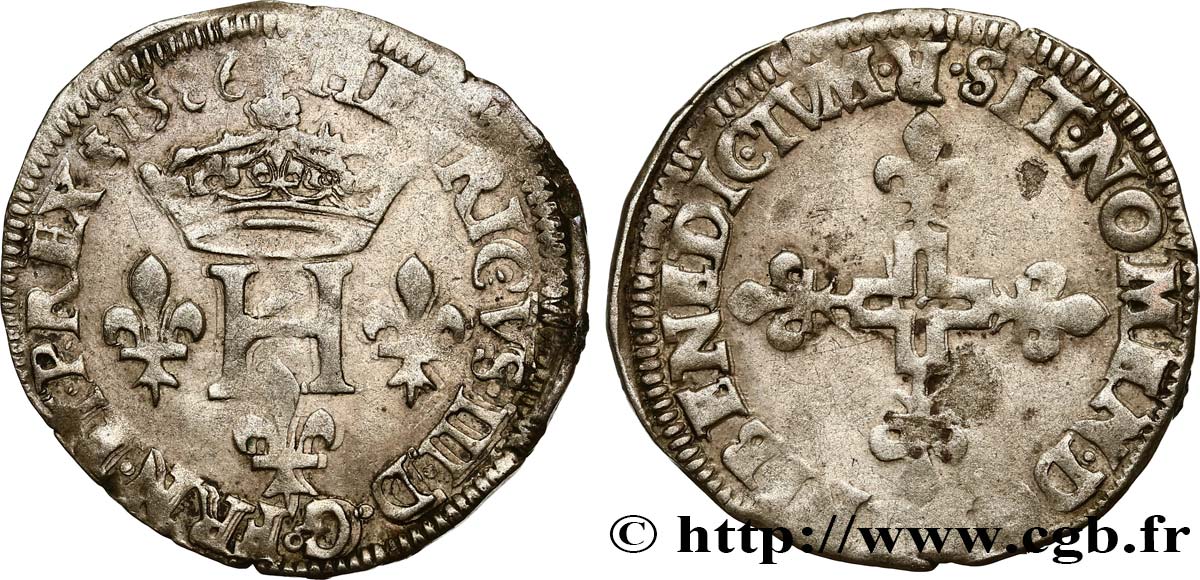
 Cообщить об ошибке
Cообщить об ошибке Распечатать страницу
Распечатать страницу Отправить мой выбор
Отправить мой выбор Задать вопрос
Задать вопрос Consign / sell
Consign / sell
 Информация
Информация
